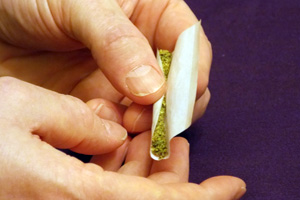The popularity of smoking tobacco has been growing in Australia since 2014 and, by last year, had taken the per capita consumption of licit products to 90.8g, according to the data and analytics company GlobalData.
A GlobalData press note did not say what the per capita consumption had been prior to 2017.
Overall, the market for smoking tobacco, which is hugely dominated by fine-cut, includes too a considerable amount of “chop-chop” or illicit loose tobacco.
GlobalData says in its report, Smoking Tobacco in Australia, 2018, that the growth in smoking tobacco sales had come about partly because tax hikes on manufactured cigarettes had rendered fine-cut competitively priced.
Meanwhile, the press note said that the market share of manufactured cigarettes within the total licit tobacco sector had declined from 92.4 percent in 2007 to 86.9 percent in 2017, while, during the same period, the market share of fine-cut had gone from 6.8 percent to 12.6 percent.
And it said that the increases in smoking tobacco’s volumes and market share had been driven by strong growth in sales of fine cut, which accounted for 99.6 percent of the smoking tobacco market; while pipe tobacco sales had continued their steady decline.
Volume sales of smoking tobacco are said to have increased by 29.5 percent between 2007 and 2017, but the prospects for the fine-cut market are said to be mixed. In the short term, GlobalData said, volumes would continue to expand, but the long-term prospects were more pessimistic as a result of ever-tightening regulatory restrictions.
‘Australia is a highly regulated market and the government has been using tax policies to curb tobacco consumption,’ GlobalData said in a press note. ‘Smoking appears to be in decline with the latest data placing adult smoking at only 14.9 percent, compared to almost 30 percent in 1990.’
Ranjan Singh, tobacco markets analyst at GlobalData was quoted as saying that while it seemed that the country’s smoking population had stabilized, current strategies aimed at making smoking more expensive and more restricted could can be expected to reduce smoking further.
Loose tobacco in fine shape











